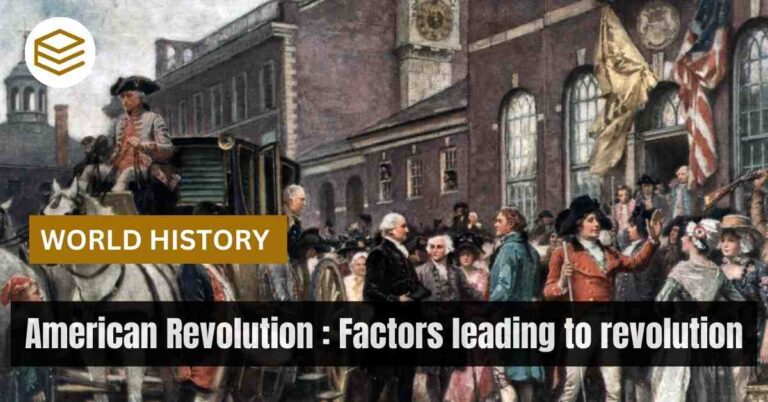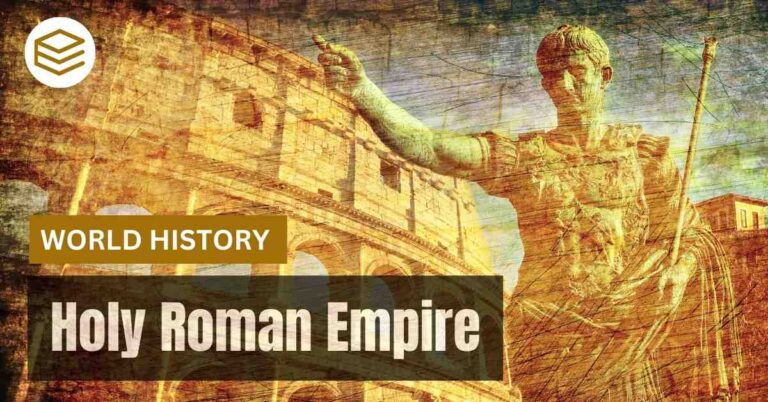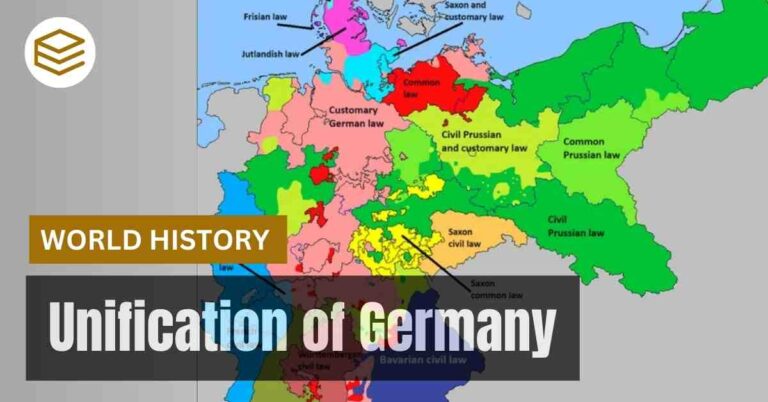December 7, 2025 3:43 am
Introduction: The Foundations of the European State System
The evolution of the European state system is a remarkable tale of how fragmented medieval territories transformed into cohesive, sovereign nation-states. This system influenced modern concepts of governance, sovereignty, and diplomacy, laying the groundwork for contemporary international relations. From the decentralized feudal structures of the Middle Ages to the powerful centralized monarchies of the early modern period, this transformation reflects centuries of conflict, negotiation, and adaptation.
1. Medieval Europe: Fragmentation and Local Power
Localized Loyalties and Fragmented Societies
In the pre-1500s European landscape, nation-states as we know them today did not exist. Society revolved around local identities, with individuals pledging allegiance to feudal lords rather than larger political entities.
- Examples of Fragmentation:
- In France, peasants rarely interacted with the monarchy, focusing instead on their immediate obligations to feudal landlords.
- The Holy Roman Empire consisted of semi-autonomous regions, where local rulers such as dukes, bishops, and princes exercised significant independence from the emperor.

Feudalism as the Dominant System
Feudalism structured society into hierarchies where monarchs had limited direct control over their territories. Vassals provided military and administrative support, but their autonomy often challenged central authority.
- Consequences of Feudalism:
- Laws and customs varied greatly across regions, creating fragmented societies.
- Localized economies and decentralized governance made collective national identities impossible.

The Catholic Church: A Transnational Power
The Catholic Church unified Europe under a shared religious and moral framework, often mediating conflicts between rulers. However, its dominance also restricted the development of centralized political authority.
- Examples:
- The Pope’s ability to excommunicate rulers, as seen in the Investiture Controversy, limited secular power.
- Religious authority frequently overshadowed monarchs, hindering state-building efforts.
2. The Renaissance: Cultural and Economic Shifts
The Renaissance (14th–17th centuries) ushered in profound changes that weakened feudal systems and paved the way for centralized states.
Economic Transformation
The growth of trade and commerce during the Renaissance empowered merchant classes and reduced feudal lords’ influence.
- Example:
The Hanseatic League, a network of trading cities in Northern Europe, fostered economic collaboration and interdependence, challenging localized economies.
Cultural Awakening
Renaissance humanism emphasized individualism, reason, and secular governance. Intellectuals like Niccolò Machiavelli advocated for pragmatic leadership and centralized control.
- Machiavelli’s Legacy:
His seminal work, The Prince, became a guide for rulers seeking to consolidate power, laying the foundation for modern statecraft.
Early State Formation
Monarchs capitalized on these shifts, aligning with emerging urban elites to consolidate power and reduce reliance on feudal lords.
- Example:
England’s Tudor dynasty centralized power by forming alliances with merchants, creating a cohesive administrative structure.
3. Religious Reformation: A Political Turning Point
The Protestant Reformation of the 16th century reshaped Europe’s political and religious landscape, catalyzing the development of the modern state system.
Challenge to the Catholic Church
Martin Luther’s 1517 critique of the Church’s practices ignited widespread dissent, empowering rulers to establish national churches and reduce papal authority.
- Example:
Henry VIII’s creation of the Anglican Church allowed the English monarchy to assert religious and political dominance.
Religious Wars and Political Realignments
The Reformation triggered prolonged conflicts between Catholic and Protestant states, forcing rulers to consolidate power to maintain stability.
- Example:
The Thirty Years’ War (1618–1648) devastated central Europe, highlighting the necessity of strong centralized governance to prevent anarchy.
4. The Thirty Years’ War and the Westphalian System
The Thirty Years’ War: A Multi-Faceted Conflict
The war, rooted in religious divisions and territorial rivalries, involved nearly all major European powers. Its widespread devastation underscored the need for a new political framework.
- Impact:
Over 8 million casualties and significant economic decline in central Europe.
The Peace of Westphalia (1648): A Turning Point
The treaty established principles that defined the modern nation-state system:
- Sovereignty: States gained supreme authority over their territories.
- Non-Interference: External powers were prohibited from meddling in domestic affairs.
- Legal Equality: All states were recognized as equal under international law.
- Implications:
The Westphalian system marked the end of religious wars and the rise of secular governance in Europe.

5. Absolutism and the Rise of Centralized Monarchies
The early modern era witnessed the emergence of powerful monarchies that consolidated authority and centralized governance.
France: Louis XIV’s Absolutism
Louis XIV (1638–1715), the “Sun King,” epitomized absolutism, declaring, “I am the state.” His policies reshaped France into a centralized state.
- Key Policies:
- Construction of Versailles to control the nobility.
- Strengthening the military and promoting mercantilism to enhance state revenues.
England: Centralization and Parliamentary Evolution
The Tudor and Stuart dynasties centralized power while fostering a parliamentary system that balanced royal authority with representation.
- Example:
The Glorious Revolution (1688) established constitutional monarchy in England, setting a precedent for modern democratic governance.
6. Warfare and State Power: The Military Revolution
The Military Revolution
Advancements in military technology, such as gunpowder and professional standing armies, necessitated centralized states capable of funding and organizing large-scale warfare.
- Example:
The introduction of artillery during the Hundred Years’ War revolutionized medieval combat, favoring centralized states.
Napoleon Bonaparte’s Legacy
Napoleon’s campaigns (1799–1815) spread the ideals of nationalism and centralized governance across Europe.
- Napoleonic Code:
His legal reforms established uniform systems in conquered territories. - Impact:
His defeat inspired nationalist movements, particularly in Italy and Germany.
7. Nationalism and 19th-Century State Formation
The Unification of Germany and Italy
The 19th century saw the unification of fragmented territories into cohesive nation-states, driven by nationalist ideologies.
- Germany:
Otto von Bismarck’s Realpolitik strategy united Germany under Prussian leadership in 1871. - Italy:
Figures like Giuseppe Garibaldi and Count Cavour orchestrated Italy’s unification through diplomacy and war.
The Role of Industrialization
The Industrial Revolution strengthened national economies, fostering interdependence and unifying regions within states.
- Example:
Railways facilitated communication and trade, knitting diverse regions into cohesive units.

8. The Export of the Nation-State Model
Imperialism and Colonialism
European powers exported the nation-state model globally, often imposing artificial borders that disregarded local identities.
- Example:
The Berlin Conference (1884–85) divided Africa into European-controlled territories, leading to enduring conflicts.
Post-Colonial Challenges
The imposition of European state models in Asia, Africa, and Latin America created challenges for newly independent nations, including ethnic conflicts and weak governance structures.
9. Modern Challenges to the Nation-State System
Globalization
Supranational organizations like the European Union challenge traditional notions of state sovereignty.
- Example:
Brexit highlighted the tension between national identity and regional integration.
Regional Movements
Separatist movements, such as those in Catalonia, Scotland, and Kurdistan, question the viability of unified nation-states.
10. The Legacy of the European State System
Key Features
- Sovereignty: States exercise supreme authority within their borders.
- Legal Equality: All states are recognized as equals in international law.
- Territorial Integrity: Borders are considered inviolable.
Global Influence
The European state system’s principles underpin modern institutions like the United Nations and continue to shape international relations.
Conclusion: The Enduring Influence of the European State System
From fragmented feudal territories to cohesive nation-states, the European state system reflects humanity’s pursuit of order, security, and identity. Despite modern challenges like globalization and regionalism, the principles of sovereignty and nationalism remain central to global governance.





[…] the nation-state as the primary political unit in […]
[…] V. Conclusion: Louis XIV and the Nation-State […]
[…] His legacy, spanning military conquests and domestic reforms, laid the foundations of the modern nation-state and left an indelible mark on European […]